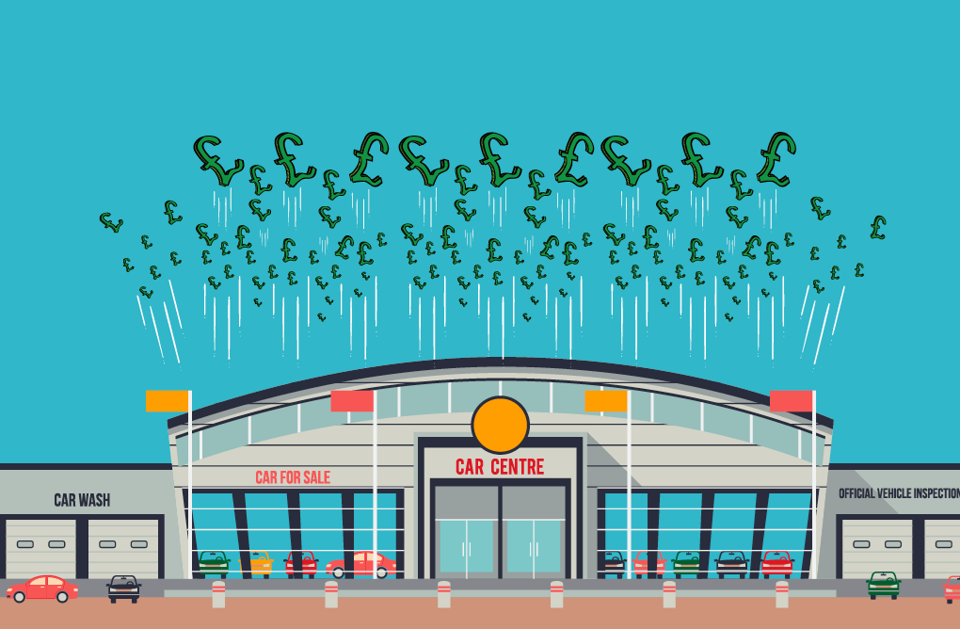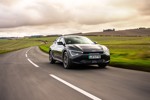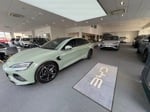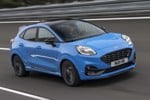By Jonathan Kearney
The automotive business has never been synonymous with ‘being green’ – making and driving cars uses a lot of energy, and produces a lot of carbon.
Manufacturers have done a lot in recent years to counter this – the numbers of electric or hybrid cars are growing, brands have enshrined sustainability principles enshrined in their corporate and social responsibility (CSR) strategies and the use of recyclable raw materials and efficiency measures in factories is becoming commonplace. But what about the process of selling the cars?
There are 4,900 franchised dealerships in the UK producing about a million tonnes of carbon dioxide a year between them.
Showrooms, with their great expanses of glass and steel, are not always the most environmentally friendly buildings and inside, expensive lighting and heating/cooling systems use large amounts of energy.
However, dealerships are moving to make this part of the car’s journey as eco-friendly as possible. Showrooms are beginning to incorporate LED lights, photovoltaic roof tiles, heat recovery ventilation systems and more, even harvesting rainwater to wash the cars and burning waste oil from workshops for heating.
But as the auto industry seeks to shift perceptions of the sector, can dealerships balance the value of ‘being green’ with the financial investment involved?
More effective energy management and ‘easy wins’ such as LED lighting are simple to implement and the payback is quick, but for more costly green technology, it seems dealerships still need some convincing on the financial benefits.
Darrel Smallman of MDG Architects, who works predominately with BMW, said: “BMW is massively pushing the eco side of things. We have to achieve a minimum ‘Very Good’ BREEAM (the benchmarking system for ‘green’ building) in every project we do for them. However, I think there is some reluctance in its retail network to fully embrace this agenda.
“We are working with Smart Buildings on controlling energy usage remotely, such as turning off fridges at night, and intelligent lighting that automatically dims when there is strong sunlight.
“Attitudes are changing, but having that holistic green approach for the whole building is the next step that needs to be taken.”
Lorna Griffiths, from Taylor Design Architects, agrees that take-up of green tech is still limited: “It is still an area which has not been embraced by the industry.
“We are mainly seeing photovoltaics and water recycling for valet bays. Many of our clients will install such features when required under BREEAM.
“Water recycling has a major cost advantage, but for photovoltaics the pay-back is still quite long. The main area where there is a shift is the use of building management systems for running buildings more economically.
“I think there will be an increase in the use of green tech in the future, but it will be driven by planning and Building Control rather than volunteering to utilise such technologies.”
Some planning authorities require new-build showrooms to achieve Very Good or Excellent under BREEAM. A high BREEAM rating is seen as adding to a property’s sell-on value and provides increased comfort for staff and visitors.
There are currently more than 200 UK retail buildings rated BREEAM Excellent. Of those, only three are motor retailers; Kia Coulsdon, Volkswagen Coulsdon and Volkswagen West London.
Of the 675 Very Good retail buildings, 12 are motor retailers including Audi, BMW and Mini, Honda, Jaguar Land Rover and Volkswagen.
Beadles Kia in Coulsdon achieved an Excellent rating in 2011 by using 181 photovoltaic panels, a combined heat and power plant, air source heat pumps and a heat recovery system. It is expected to save more than 45 tonnes of carbon and generate 119,000 kWh of electrical energy a year.
The Inchcape Honda showroom in Romford, Essex, gained its BREEAM Very Good rating using recycled rainwater, ground source heat pumps and solar power. The measures are
estimated to reduce the showroom’s energy bill by 30% compared with standard showrooms.
Lighting is where franchises can make a big difference with minimal effort. It can account for up to 40% of a site’s electricity costs, so a switch to LED bulbs can have a big impact.
According to the Carbon Trust, new LED lighting can pay for itself in just one to three years, with ongoing maintenance savings throughout the longer lifespan of the lamps.
In fact, dealers can save up to £4,000 a year through energy-saving measures that don’t cost a penny, according to The Dealer Energy Efficiency Guide 2010, produced by The Society of Motor Manufacturers & Traders (SMMT) and the Carbon Trust.
The guide, based on a survey of 30 dealerships, estimates that retail sites could save up to 10% on energy costs with no investment, simply by reducing and managing usage more effectively. It claims savings of 25%, or £10,000 a year for an average-sized dealership, are possible with modest investment in new energy-efficient lighting, heating, ventilation and cooling.
TH White Fiat in Swindon was heralded as one of the most eco-friendly car showrooms in the country when it was built in 2012. It is heated by burning used engine oil drained from vehicles during servicing, solar panels provide much of the electric power, rainwater is harvested, and water used for cleaning vehicles is recycled.
After three years, the waste oil burner, installed at a cost of more than £17,000, has produced savings of about £9,500. The photovoltaic panels are on track to have paid for themselves after 12 years, two years earlier than expected, while the rain water harvesting has saved an estimated £4,600 from an initial £20,000 installation cost. Payback is estimated at 13 years.
Alex Scott, managing director of TH White Group, said: “The company feels it has both a moral and economic duty to embrace renewables on its premises. The philosophy of the company is to build and develop long-term relationships and sustainable businesses. So when we invest in new sites, we do so with a long-term view.
“Generally, our sites are owned and operated by us for a long time and so it is likely that we are able to justify renewable investments to our governance board.”
Wayne Jones, of Jones Architecture and Design, the company responsible for its build, said: “TH White wanted to promote the use of these technologies in motor retail and promote themselves as a company that cares about the environment by showcasing it on their buildings, even though they were not aware at the time what the real cost savings would be.
“Green tech is being implemented in the sector, but it is not mainstream yet. Building regulations are changing every three years and tightening all the time. Often planners are pushing for buildings to reach BREEAM Very Good minimum, targeting carbon reduction at up to 35% over building regulations.
“I think greater take-up is going to be forced by regulations. Eventually I can see residential buildings needing to be zero carbon, and commercial buildings too.”
That future is already happening. Darrel Smallman, of MDG, said: “Right now we are working on developing a footprint for a zero-carbon dealership, to show that it can be done and start a dialogue about it. Retail sites need to be greener and zero carbon is the next step.
“The cost benefits will need to be tested and dealers may be reticent, but it is a push in the right direction.”















Login to comment
Comments
No comments have been made yet.